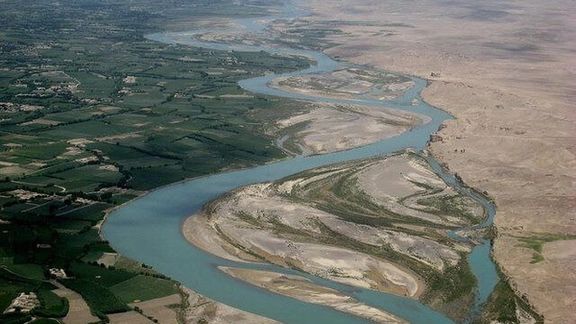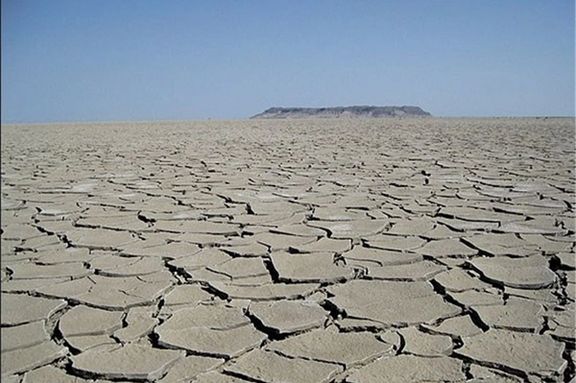Iran’s Water Dispute Continues With Taliban As They Ridicule Raisi

A major water dispute between Iran’s clerical regime and the Taliban continues as a Tehran officials issue warnings and the Afghan rulers ridicule them.

A major water dispute between Iran’s clerical regime and the Taliban continues as a Tehran officials issue warnings and the Afghan rulers ridicule them.
A Taliban official appeared in a video holding a bucket at the edge of a reservoir and saying he wants to give water to Iran. He ridiculed the Iranian regime’s president Ebrahim Raisi who had earlier used threatening language. “I want to give water, so Iran’s president does not launch a military attack.” The video went viral on social media.
Iran's foreign ministry Friday “strongly refuted” Taliban’s claim over lack of enough water in the river Hirmand (Helmand in Afghan) due to draught to release Iran's share of the river’s waters.
The foreign ministry also said Taliban’s statement over the issue contained “contradictory and false information”.
Energy Minister Ali-Akbar Mehrabian said Friday that the government is determined to pursue Iran's water rights according to the Afghan-Iranian Water Treaty of March 1973 to regulate the use of the river.
The Taliban’s claim that there is not enough water to flow from Kajaki dam towards the Iranian border is not acceptable and is in contradiction to the experience of the past few years, he said.
Foreign Minister Hossein Amir-Abdollahian also accused the Afghan government in a tweet Thursday of not allowing Iranian experts to investigate the matter in Afghanistan despite his repeated requests. “Proof of existence or lack of water is technical and actual visit [by experts], not a political statement [by the Taliban],” he wrote.
Spokesman of Iran's Aerospace Organization, Hossein Dalirian, said in a tweet Thursday that images from Iran's Khayyam satellite indicate that the government of Afghanistan has stopped the waters from reaching Iran by changing the course of the river in some areas and building “numerous” barriers.
The halt in the flow of water from Afghanistan has seriously affected the lives of hundreds of thousands in the southeastern province of Sistan and Baluchestan.

While Afghanistan says it needs dams to store water for agriculture or to produce electricity, which it imports from neighboring countries including Iran, many environmentalists are critical of large-scale water engineering projects.
The Iranian government, and environmentalists, argue constructing the dam on Helmand River will deepen problems in Iran’s eastern provinces, particularly in Sistan-Baluchestan where water resources are scarce. Declining rainfall since late 1990s, which caused prolonged droughts in the Helmand basin, as well as water mismanagement both in Afghanistan and Iran, has had serious ecological, economic and social impact.
Wetlands in Sistan have largely turned into salt flats, the once rich wildlife has disappeared, and many local villages abandoned. In 2019, after nearly two decades of drought, water from Helmand reached the wetlands of Sistan and partially revived the Hamoun-e Hirmand Lake. The lake is a UNESCO biosphere reserve.
The dispute between the two countries over water is long standing but it has escalated in the past few years.
In March 2021 in a televised speech inaugurating the Kamal Khan Dam in Nimroz province, former Afghan President Ashraf Ghani said that while Afghanistan remained committed to the treaty but added that "anything beyond the stipulated quota" required further discussion. He suggested that Iran should pay for ‘extra’ water from the Helmand River by providing oil to his country.
His remarks appeared to refer to Article V of the 1973 treaty, which stipulated Iran in "a normal water year" was entitled to a flow of 22 cubic meters per second from the 1,150km (700 mile) long river.
Hirmand rises in the Hindu Kush before flowing west into Iran and feeding an area of wetlands in the Sistan region including Hamoun Lake. Iran has not always received this amount – in 1999, for example, the Taliban turned off the flow completely.
President Ebrahim Raisi's special envoy for Afghan affairs, Hassan Kazemi Qomi, said Tuesday that Iran received 27 million cubic meters of water out of the 820 million cubic meters it was entitled to under the 1973 treaty.